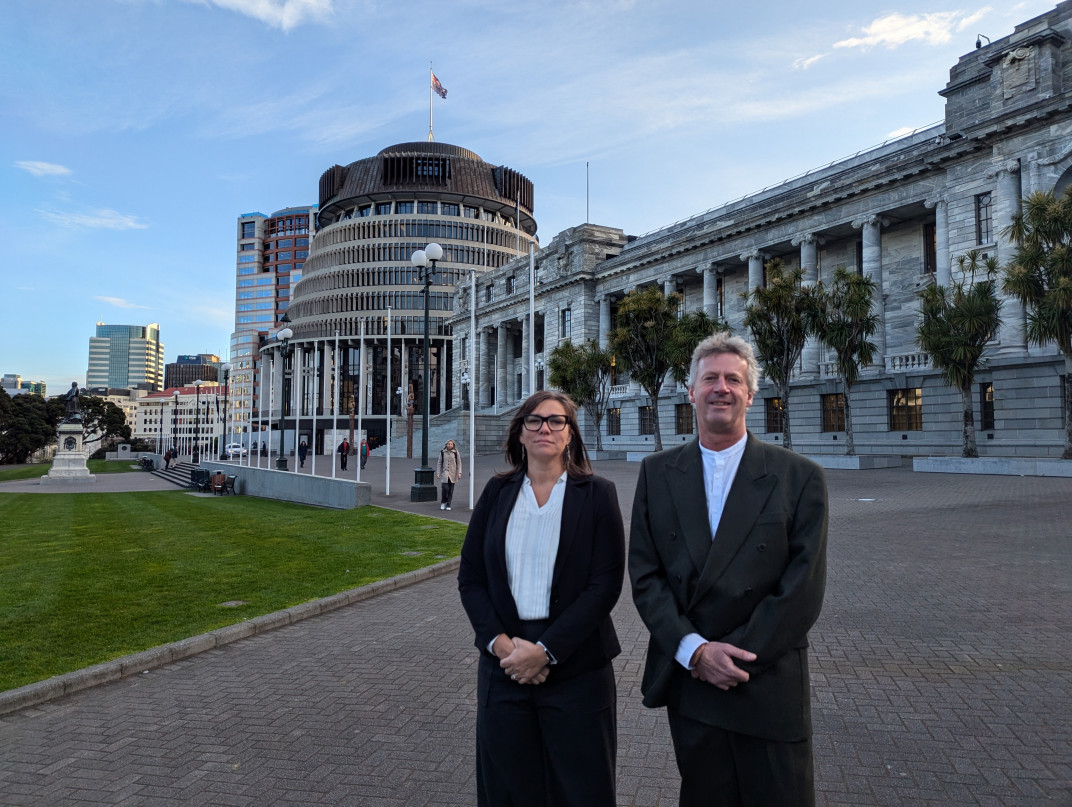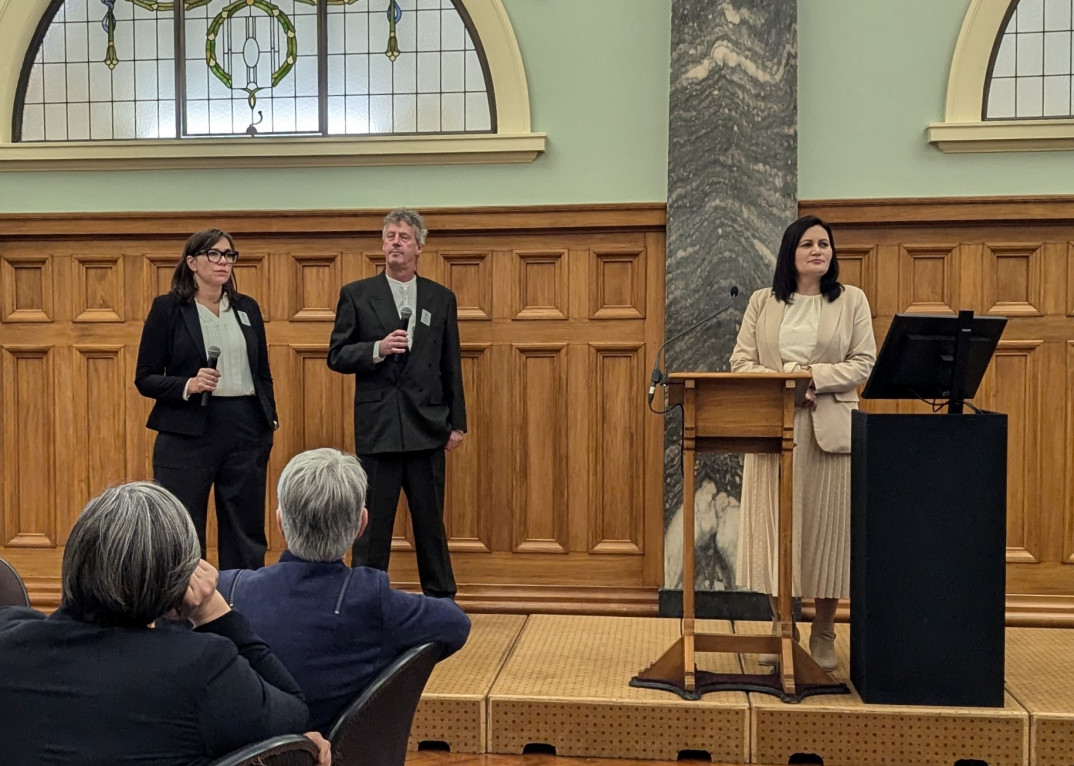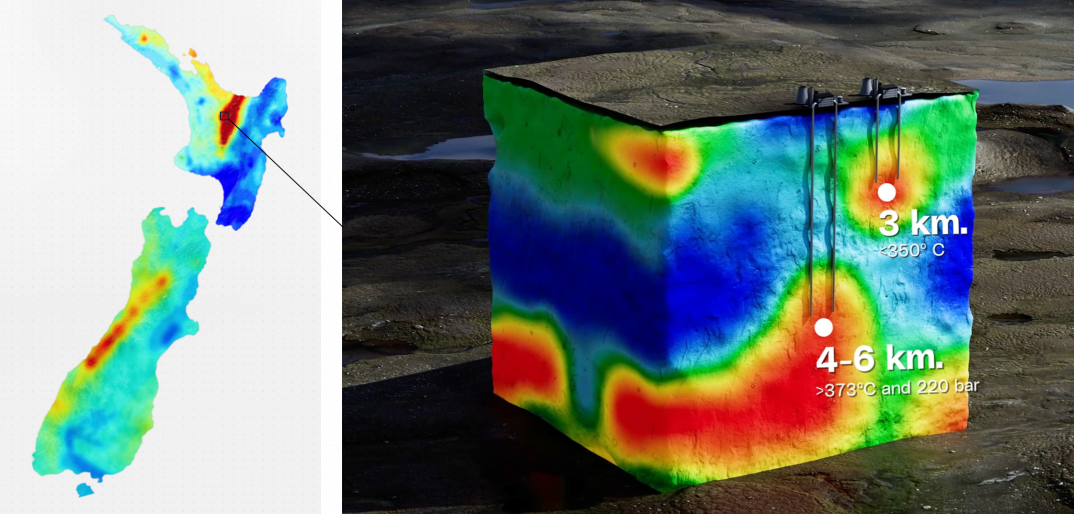The future of energy in Aotearoa New Zealand
The second-to-last event in our Speaker's Science Forum series for 2024 was held on 18 Mahuru September at Parliament. Professor Alan Brent gave an overview of how Aotearoa New Zealand can manage its energy transition to renewables. Dr Isabelle Chambefort sold MPs on how we can power the country using geothermal energy.

Investing in our just energy transition: Implications across different scales
Professor Alan Brent, Te Herenga Waka—Victoria University of Wellington
Professor Alan Brent is the inaugural holder of the Chair in Sustainable Energy Systems at Te Wāhanga Ahunui Pūkaha Wellington Faculty of Engineering, Te Herenga Waka—Victoria University of Wellington.
Professor Brent gave MPs a rapid, wide-ranging presentation on the 6Ds of the energy transition – Decarbonisation, Decentralisation, Digitalisation, Democracy, Disruption, Diversity – and how they apply to Aotearoa New Zealand.
Professor Brent covered the following subjects:
- Investment in renewable energy – he expects solar and wind to make up a large proportion of our electricity needs in the future.
- The need to store energy for a (literal) rainy day and the technologies available and upcoming.
- How to best use our land – like combining farming and solar electricity generation, termed agrivoltaics.
- The importance of energy security and resilience. For example, microgrids and distributed small-scale systems allow communities to be energy independent and help recovery from events like Cyclone Gabrielle.
- The cost of renewable energy: what we need to invest and how we could profit as individuals and a country.

Superhot geothermal: A baseload energy solution for New Zealand
Dr Isabelle Chambefort, GNS Science
Dr Isabelle Chambefort is the Science Energy Futures Leader at GNS Science. She spoke to MPs about how Aotearoa New Zealand can harness deeper and hotter geothermal resources to reach our goal to double renewable electricity by 2050. Today, geothermal energy makes up 18-19% of our electricity generation, but Dr Chambefort says that this could double.
Using geothermal energy means harnessing the power of the heat within the earth. Wells are drilled in the crust where heat is easily accessible and steam drives turbine generators on the surface. The generators provide electricity for our national grid and the leftover gases and water are pumped back underground.
In Aotearoa New Zealand, we have a massive, and almost infinite, heat engine beneath our feet. The subduction between the Australian and Pacific plates continuously drives huge amounts of heat energy to the surface, producing volcanoes, hot pools, and abundant geothermal resources.
Dr Chambefort argues that growing geothermal energy should be a key part of our energy security. Geothermal can provide a much needed boost to New Zealand’s baseload electricity generation to compliment the growth of intermittent supply from wind and solar generation. The advantage of geothermal is it is available 24/7/365, eases battery demand, and is not affected by weather. Geothermal also has a small surface footprint, low emissions, and with C02 reinjection technology, can achieve completely carbon-neutral generation.
To identify the best locations to harness more geothermal energy, Dr Chambefort’s Geothermal: The Next Generation team studies the Earth’s crust and models the locations of the hot and superhot spots. Using only geothermal sites in the Taupō Volcanic Zone (and not including protected areas), they have calculated that by drilling deeper – around four to six km, rather than three km, – we can reach “superhot” spots of greater than 370˚C and high pressure.
Superhot geothermal is more efficient at energy generation, and in these sites, there is enough energy to provide 29,351 gigawatt hours of electricity per year (or about two thirds of what the entire country uses in a year).
But is this realistic? Dr Chambefort’s team had Castalia Limited independently evaluate the economic viability of superhot geothermal for New Zealand. The analysis verified that even at double the average cost of geothermal infrastructure development, it would be economically viable for superhot geothermal to produce a massive 2000MW as early as 2037, and conservatively by 2049.

Map showing geothermal activity through Aotearoa New Zealand. An inset shows temperatures underground.
